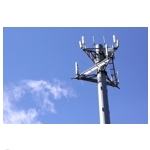 AT&T today got the go-ahead from the FCC to deploy LTE in 20 MHz of spectrum the company has held for years but could not build out because of a dispute with satellite radio provider SiriusXM. The go-ahead came in the form of an amendment to rules governing wireless deployment in the 2.3 GHz band adopted at today’s FCC meeting.
AT&T today got the go-ahead from the FCC to deploy LTE in 20 MHz of spectrum the company has held for years but could not build out because of a dispute with satellite radio provider SiriusXM. The go-ahead came in the form of an amendment to rules governing wireless deployment in the 2.3 GHz band adopted at today’s FCC meeting.
The fate of the 2.3 GHz spectrum in the WCS band has been in limbo for more than a decade since satellite radio provider SiriusXM complained that deployment of mobile broadband wireless technology in that band would interfere with its service, which is delivered over an adjacent band. After years of fighting, AT&T and SiriusXM several months ago came to an agreement that the companies said could enable the 2.3 GHz band to support mobile broadband service without causing harmful interference to SiriusXM.
As part of today’s action, the FCC also said it would consider allowing WCS licensees to use an additional 10 MHz of WCS spectrum for possible use for downlink mobile broadband communications. In addition the commission extended build-out requirements for the 20 MHz of 2.3 GHz spectrum already in the hands of AT&T and other carriers.
Also at today’s meeting FCC officials applauded wireless carrier members of CTIA – The Wireless Association for implementing technology to automatically alert customers when they approach or exceed their monthly usage allotments. CTIA members voluntarily made a commitment a year ago to put these capabilities in place after the FCC received complaints from customers that they had received unusually large bills as a result of unknowingly exceeding their limits – a phenomenon that has come to be known as “bill shock.”
Carriers agreed to implement at least two of four customer notifications by today’s date and to implement all four by April 2013. According to a presentation made by FCC officials at today’s meeting, CTIA members have met or exceeded the first goal and are on track to meet the April 2013 goal as well.


